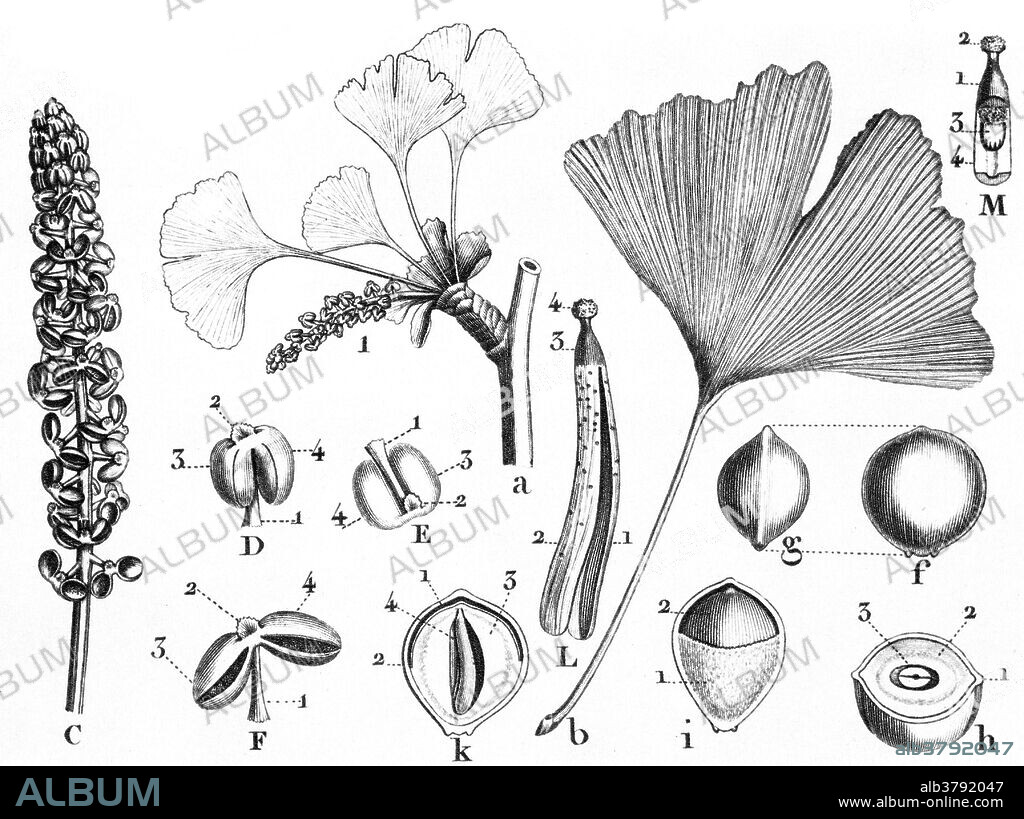alb3792047
Ginkgo biloba, Living Fossil

|
Add to another lightbox |
|
Add to another lightbox |



Title:
Ginkgo biloba, Living Fossil
Caption:
Ginkgo biloba by Louis Claude Marie Richard (September 17. 1754 - June 6, 1821) a French botanist and botanical illustrator. Ginkgo is a genus of highly unusual non-flowering plants. The scientific name is also used as the English name. The order to which it belongs, Ginkgoales, first appeared in the Permian, 270 million years ago, possibly derived from "seed ferns" of the order Peltaspermales. The rate of evolution within the genus has been slow, and almost all its species had become extinct by the end of the Pliocene; the exception is the sole living species, Ginkgo biloba, which is only found in the wild in China, but is cultivated across the world. The relationships between ginkgos and other groups of plants are not fully resolved. The nut-like gametophytes inside the seeds are particularly esteemed in Asia, and are a traditional Chinese food. Ginkgo nuts are used in congee, and are often served at special occasions such as weddings and the Chinese New Year. In Chinese culture, they are believed to have health benefits; some also consider them to have aphrodisiac qualities. Japanese cooks add ginkgo seeds (called ginnan) to dishes such as chawanmushi, and cooked seeds are often eaten along with other dishes.
Credit:
Album / NYPL/Science Source
Releases:
Model: No - Property: No
Rights questions?
Rights questions?
Image size:
4350 x 3253 px | 40.5 MB
Print size:
36.8 x 27.5 cm | 14.5 x 10.8 in (300 dpi)
Keywords:
19TH CENTURY • ALTERNATIVE MEDICINE • APHRODISIAC • APHRODISIAQUE • ART • ARTWORK • BOTANICAL • BOTANY • BOTANY • BOTANY • BW • CHINESE FOOD • DIAGRAM • DRAWING • FLORA • GAMETOPHYTE • GINGKO • GINKGO BILOBA • GINKGO NUTS • GINKGO SEEDS • GINKGO TREE • GINKGO • GINKGOACEAE • GINKGOALES • GINKGOOPSIDA • GINKGOPHYTA • GINNAN • HEALTH BENEFITS • HERBAL MEDICINE • ILLUSTRATION • LIVING FOSSIL • LOUIS CLAUDE MARIE RICHARD • MAIDENHAIR TREE • NON-FLOWERING • PLANT • PLANTA • PLANTAE • PLANTS
 Pinterest
Pinterest Twitter
Twitter Facebook
Facebook Copy link
Copy link Email
Email

